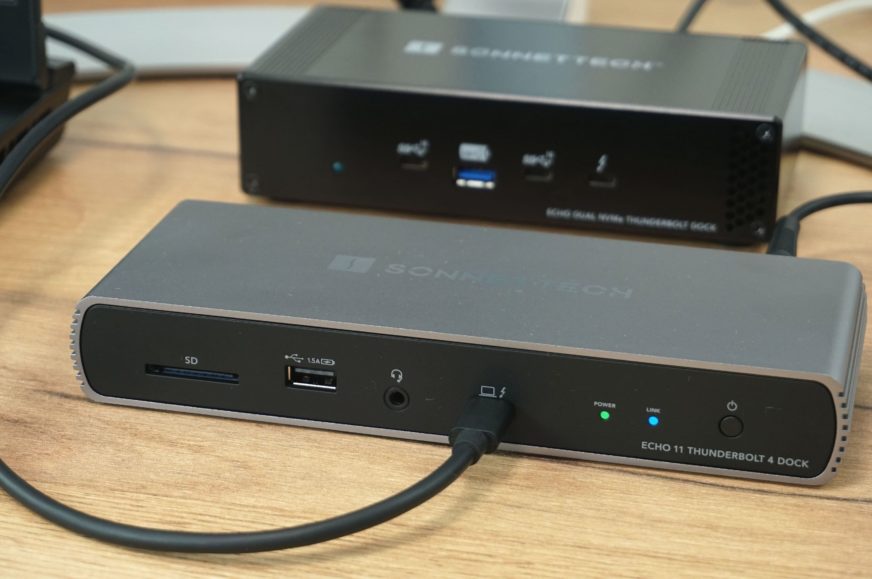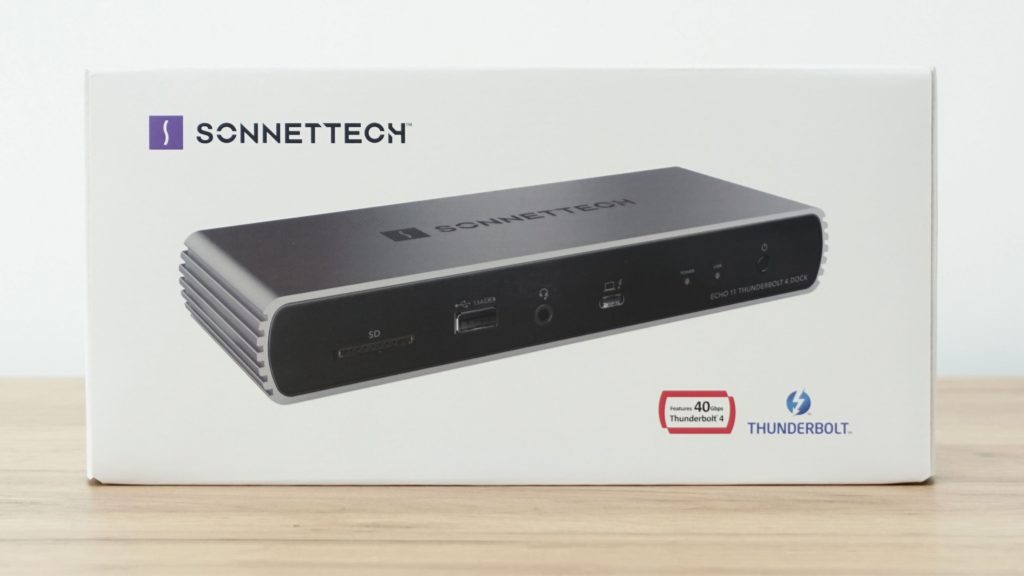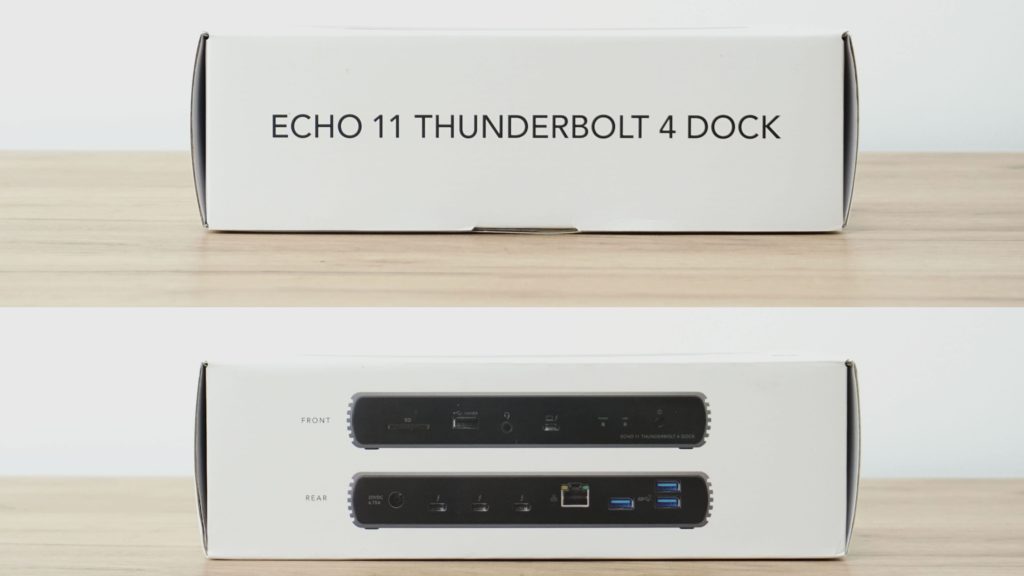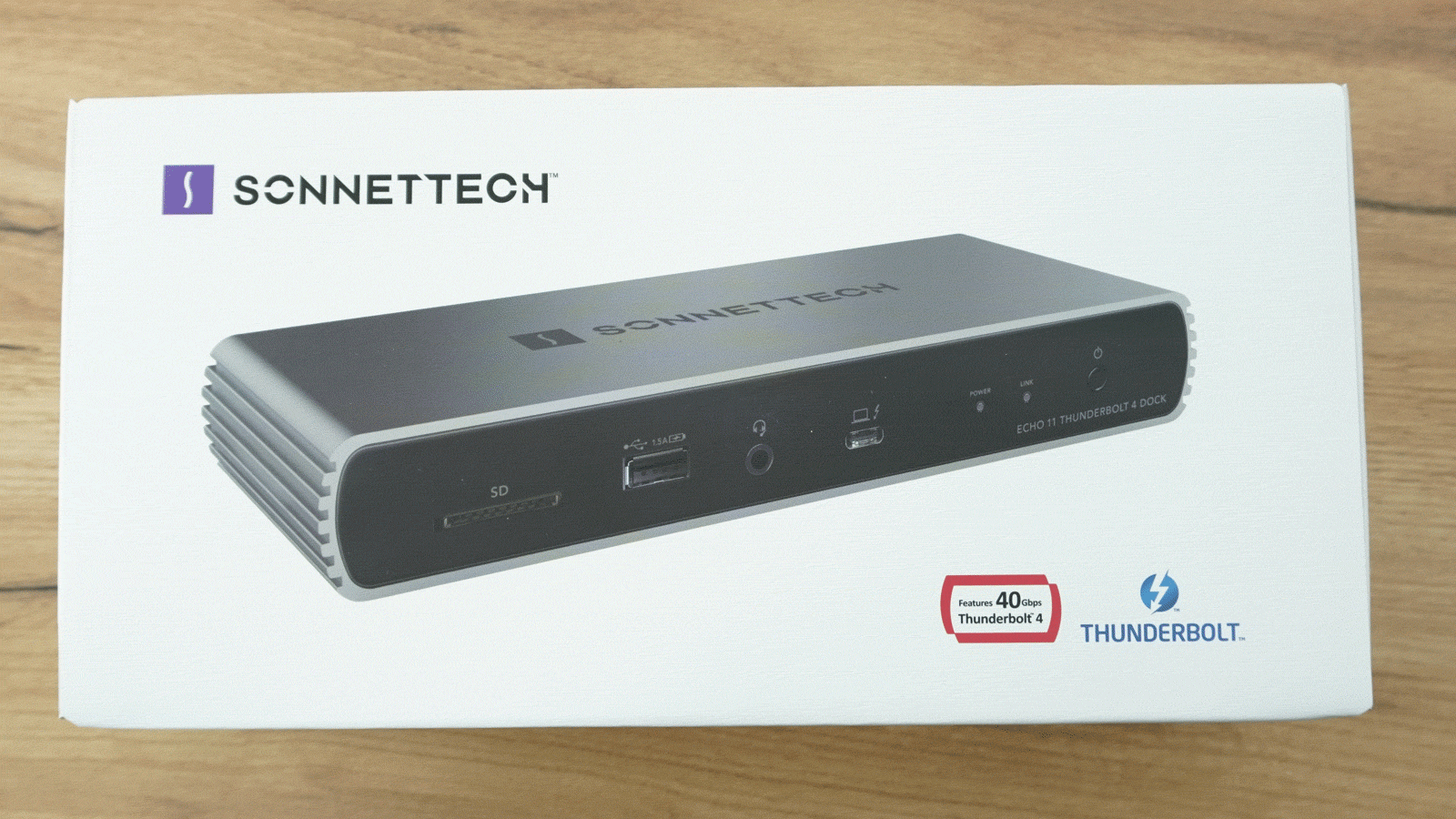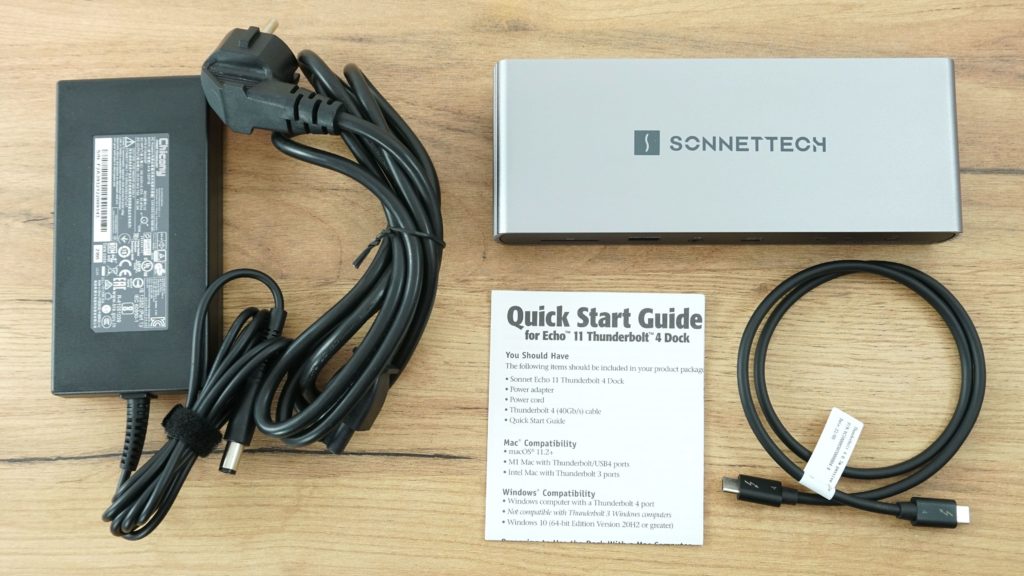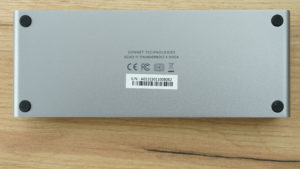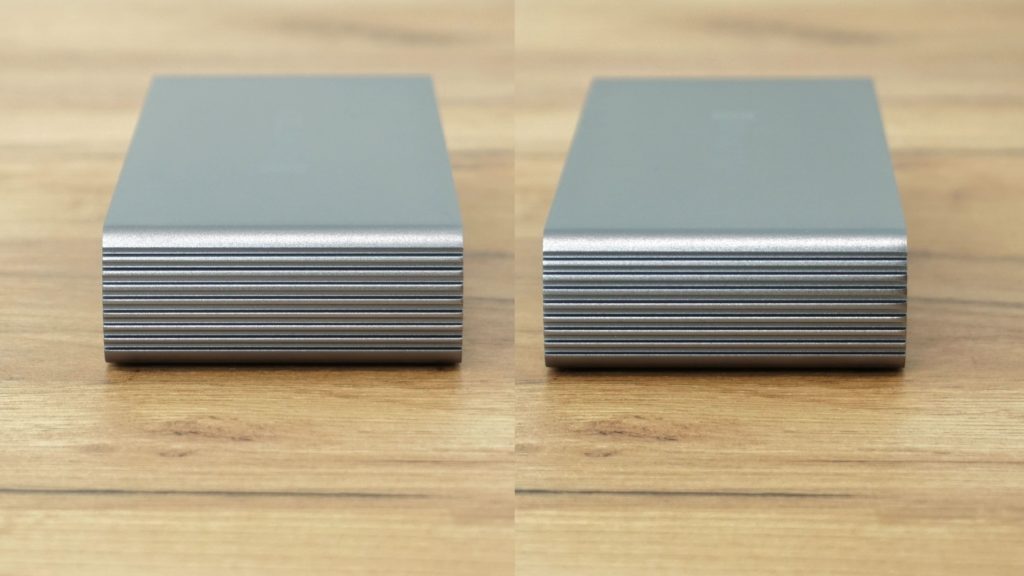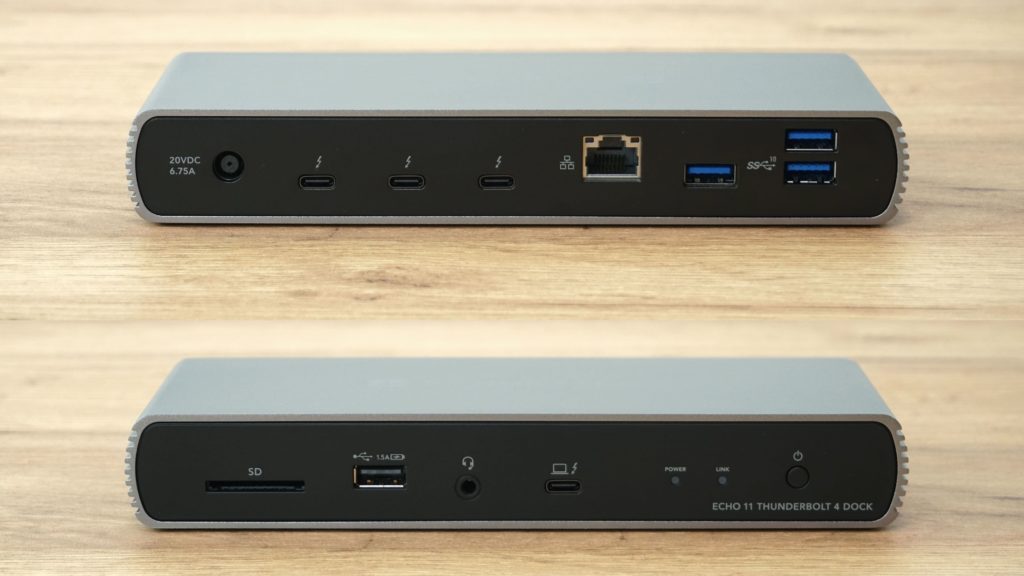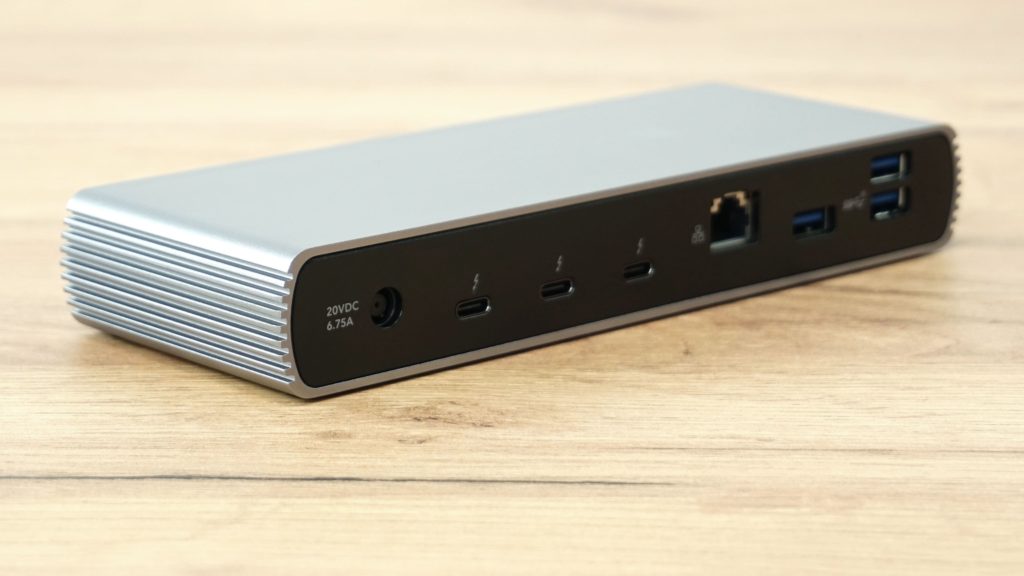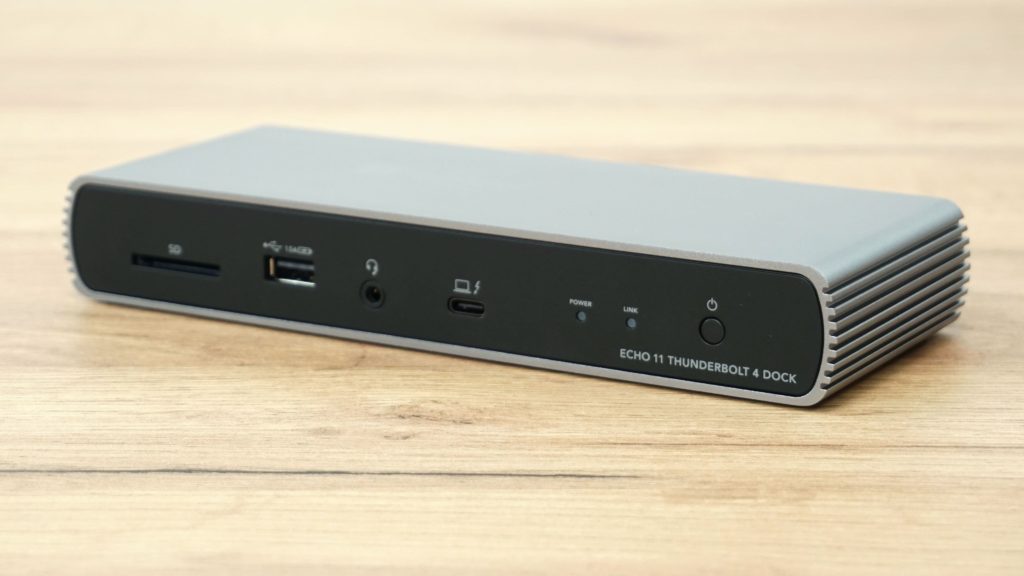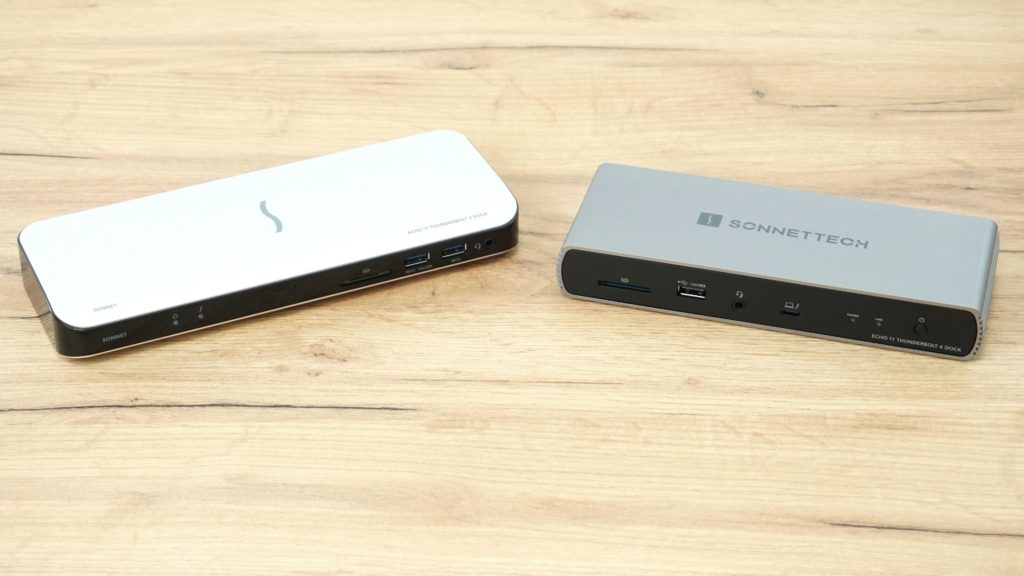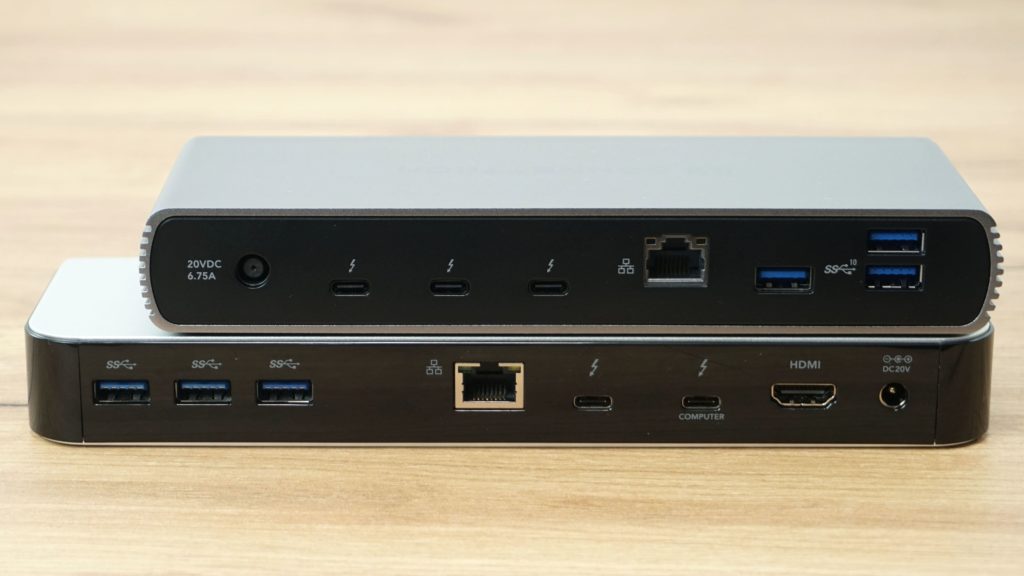Echo 11 Thunderbolt 4 Dock
Modern docking stations look a little different than they did years ago. Firstly, no more proprietary connectors, and for another, they allow you to connect a large number of accessories thanks to the very high-bandwidth Thunderbolt interface. A port in a laptop itself is a good start, but it doesn’t mean “anything” on its own and needs a little help to branch out. And that, in the context of this test, is the task of Sonnet, the docking station specialist.
Basic parameters
| Parametre | Sonnet Technologies |
| Echo 11 Thunderbolt 4 Dock | |
| Parametre | |
| Thunderbolt | 4× (1x client, 3x daisy chain) |
| Nabíjanie | TB - 90W |
| Video výstup | 3× TB (redukcia) |
| Sieťové konektory | 1× RJ-45 s 1 Gb/s, Realtek RTL8153B |
| Porty USB | 3× USB 3.2 gen 2 10 Gb vzadu, 1× USB 2.0 (nabíjanie až 7,5W) vpredu |
| Ďalšie konektory | 3,5 mm audio, čítačka SD kariet, power |
| Indikátory | power, TB pripojenie |
| Rozmery | 200 × 75 × 30 mm |
| Orientačná cena | 370 eur |
Package and accessories
We’ll start with the successor to the dock we tested three years ago. Specifically, it’s the Echo 11 Thunderbolt 4 Dock, with only one digit in the name separating it from its older sibling. Fortunately, the product itself differs in a number of ways. The first is the packaging, which has been given a new colorful graphic.
Compared to the cardboard box with white print, this is not only a visual improvement, but also a more information-rich presentation of the product. The depiction of the dock itself is preserved as well as the detailed view of the port equipment.
The dock is carefully packed in the box so that it will not be damaged in transit. Under the dock you will also find the accessories.
This consists of documentation, a 0.7 m Thunderbolt 4 cable and a 135 W power adapter.
The silver body has been given a darker shade compared to its predecessor and the manufacturer’s logo on the top has also been modernized. The bottom of the dock has four rubber feet to keep it from slipping on the table.
The sides do not contain any ports, but they are interesting for their finning.
But let’s move on to the important part, which is of course the dock’s port selection. In the back we are greeted by six USB ports, three of which are classic “A’s” and three newer “C’s”. The Type-C ports are all 10-gigabit, so even fast external SSD storage won’t suffer from a lack of bandwidth. The USB-C connectors are all Thunderbolt 4-capable and designed to connect additional accessories. It’s then up to you whether that’s a screen, storage, network adapter, or some other dock. We’ll put these options to the test later on. In the back you’ll also find a gigabit Ethernet (RJ-45) port and a power connector.
The front side is a bit more modest in terms of ports: there is an SD memory card reader with UHS-II support, a USB 2.0 connector with fast charging support and an audio jack for connecting headphones with microphone, or speakers. But the most important port on the front is another, the fourth Thunderbolt 4. This one differs from the back three, as it is used to connect to your PC (or iPad Pro) and also supports charging. There’s also a pair of LED indicators and a button to turn off the dock. I don’t know why you would do this though, as this will also turn off charging for all connected devices, but in any case, there’s that too.
The new design of the metal body is best demonstrated by comparing it to its predecessor. The new one has aluminum all around the outer perimeter, while the front and back are matte black plastic. With this, the manufacturer has practically eliminated all the complaints I had about the Echo 11 TB 3, which was conceived in exactly the opposite way. Glossy black plastic along the horizontal perimeter and metal parts on the top and bottom.
The glossy black plastic is not only impractical and prone to fingerprints and dust, but it also scratches very easily, which really doesn’t look nice after three years of use. In addition to the change in design, the dimensions have also changed dramatically. The new dock is considerably smaller, namely 3 cm in length, almost a centimeter in width, but has gained slightly in thickness.
When compared, however, the new dock appears significantly thicker, which is primarily due to the rounded design of its predecessor. As for the changes in the port selection, these are quite substantial. Two 5Gb USB ports in the front have been replaced by just one USB 2.0 port and the Thunderbolt for PC, which we’ve already mentioned. The front Thunderbolt port makes sense if you place the dock under a monitor and the laptop on the side or in front of the monitor. That way the cables don’t have to come out the back and bend forward right away.
At the back, the trio of USB Type-A ports saw an increase in speed from 5 to 10 Gbps and the ethernet was retained. However, the dock lost the HDMI 2.0 video output connector. This is partially replaced by a higher number of Thunderbolt peripheral ports, which has grown from one to three, so you can easily use one to connect a monitor to one and still have two left over (one more than its predecessor).
I must again highlight the new product’s use of matte black plastic instead of glossy black plastic, which was the biggest design flaw of the predecessor. The Echo 11 TB 4 is admittedly full of improvements, but even so, there are fewer USB ports on the front panel and the removal of the HDMI connector again means the necessity of using a USB-C–HDMI cable or adapter, which you’re not likely to find just laying around the house. The biggest advantage of the new product is the trio of Thunderbolt peripheral ports, which enable high flexibility and various options when connecting accessories. The predecessor’s single port was often limiting and I had to power another dock through the Daisy Chain instead of plugging it in directly. We’ll look at this later in our tests as well.
- Contents
- Echo 11 Thunderbolt 4 Dock
- Echo 11 Thunderbolt 4 Dock
- Echo 11 Thunderbolt 4 Dock
- Echo 11 Thunderbolt 4 Dock
- Echo 11 Thunderbolt 4 Dock





